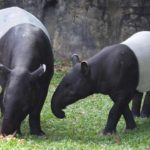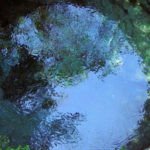15 interesting facts about ferns
 In all the forests of our planet, you can see ferns, ancient plants, like life itself on Earth. Well, not so ancient, of course, but they are still much older than most other representatives of the plant world. After going through millions of years of evolutionary processes, they have not changed much, and we see them almost the same as they were in time immemorial.
In all the forests of our planet, you can see ferns, ancient plants, like life itself on Earth. Well, not so ancient, of course, but they are still much older than most other representatives of the plant world. After going through millions of years of evolutionary processes, they have not changed much, and we see them almost the same as they were in time immemorial.
In a number of countries, ferns in one form or another are eaten, mainly in Asia.
Modern research has shown that eating edible ferns helps the body get rid of radiation.
Not all types of this plant are suitable for food. Some of them are deadly poisonous.
The largest ferns, black tree-like, can be seen with their own eyes in New Zealand. In height, they grow up to twenty meters, which is comparable to the height of a 7-storey building.
Trunks of tree ferns, reminiscent of texture and strength of wood, are used as building material in some hot countries.
Evolution helped ferns develop a unique defense mechanism – some of their species secrete special substances that inhibit and suppress nearby plants. In this way, ferns release their living space.
In some countries, such as Japan, ferns are used in traditional medicine.
Ferns grow in different countries and on different continents, but most of all their diversity in Russia. In our country there are about two thousand different species.
These amazing plants have no seeds. At all. They reproduce by spores, like mushrooms.
Some of their species resemble vines, as they parasitize on trees, entwining them with their shoots.
Tropical ferns often do not grow on the ground, but on tree branches.
Strictly speaking, they have no leaves. From the point of view of botany, what looks like a fern leaf is a complex system of branches growing in one plane.
In total, there are about 10 thousand species of ferns in the world.
Australia’s Tasmania is a unique place where relict forests of tree ferns are still preserved.
The first ferns appeared on Earth about 400 million years ago, and there were many thousands of species. However, most of them died out with the dinosaurs, unable to adapt to climate change.



























